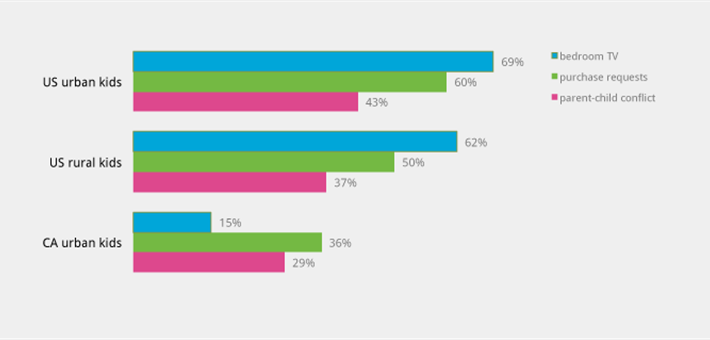
“The Nag Factor” – Kids in American Cities Beg For “As-Seen-On-TV” Stuff
How do TV ads aimed at children affect various low-income families? A study presented at an International Communication Association conference compares kids’ TV habits and family arguments. American city kids most often ask their parents for things they see on TV, which results in conflict with parents more often than in rural American and urban Canadian families.
Take aways
- American children (particularly in cities) grow up in a more commercialized media environment than their Canadian peers.
- American kids (particularly in cities) nag their parents for TV products more often and get into more arguments about them.
Study information
The question?
How does the consumer behavior of low-income children differ in various consumer cultures?
Who?
150 low-income children between 3 and 8 years old.
Where?
Urban Northeastern U.S., rural Appalachian U.S., and urban Western Canada.
How?
In a paper-and-pencil questionnaire, parents reported how often their children asked for products that were often advertised on television (e.g., toys, candy, breakfast cereals), and how often these requests ended in an argument. They also discussed their children’s’ TV habits and whether they had a TV in their bedroom or not. Finally, the children were tested on their learning skills.
Facts and findings
- American kids in urban areas ask their parents for products advertised on TV the most, followed by children in the rural U.S.
- American families are twice as likely to get in an argument when their kids ask for products in TV ads than Canadian families.
- American kids watch almost double the TV that Canadian kids do.
- Two-thirds of children in the U.S. have a TV in their bedroom, versus only 15% of Canadian kids.